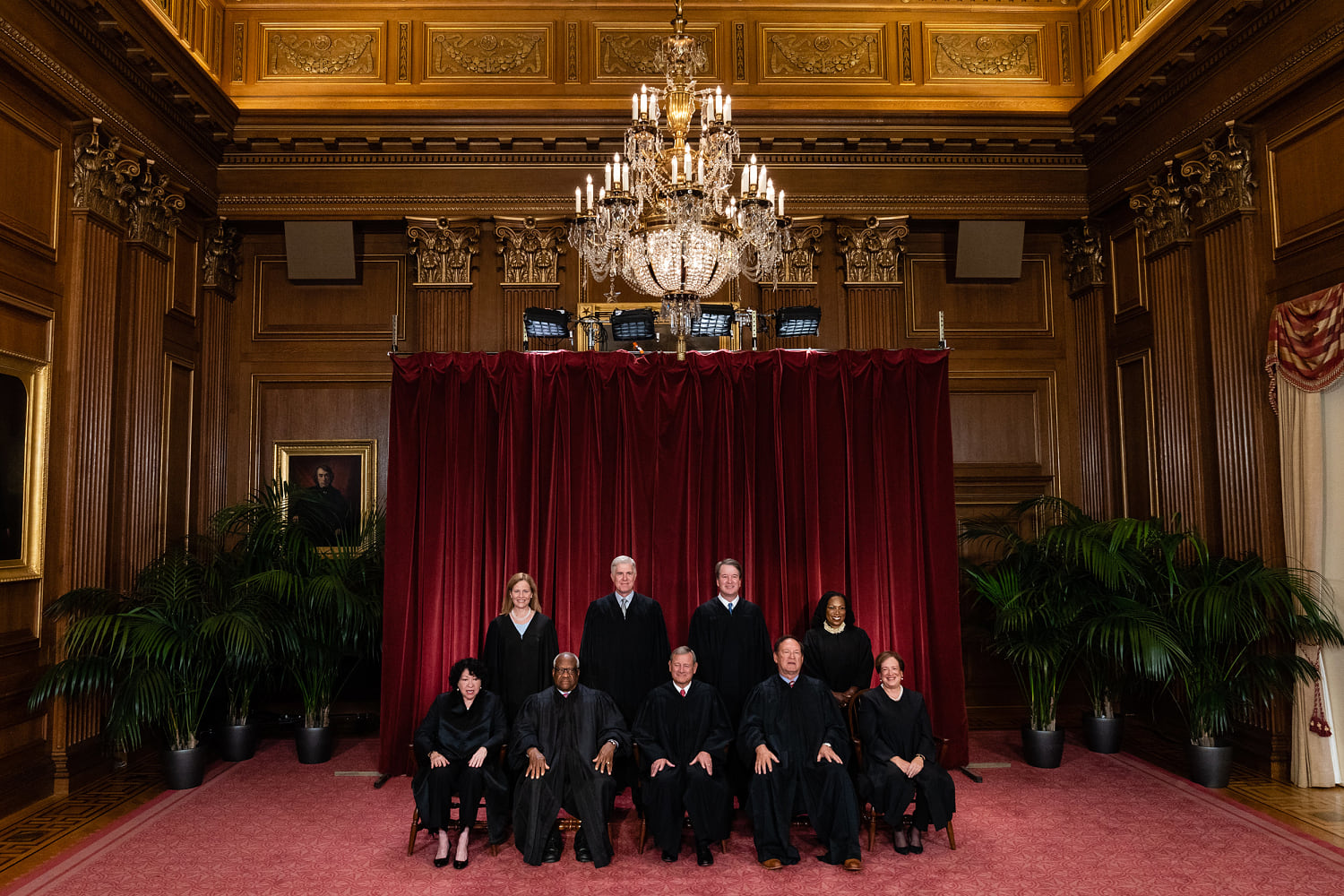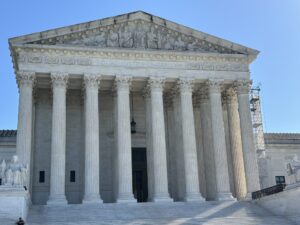https://theworldfinancialforum.com/participate/

WASHINGTON — The Supreme Court on Friday expanded the scope of a Louisiana congressional redistricting dispute that has been pending for months by ordering new briefing on a legal question that could further weaken the landmark Voting Rights Act.
The court issued an order asking the lawyers to address whether, in seeking to comply with the 1965 law that protects minority voting rights, Louisiana violated the Constitution’s 14th and 15th Amendments enacted after the Civil War to ensure Black people were treated equally under the law.
If the court rules that the state did violate the Constitution, it would mean states cannot cite the need to comply with the Voting Rights Act if they use race as a consideration during the map-drawing process, as they currently can.
Rick Hasen, an election law expert at the UCLA School of Law, wrote on his Election Law Blog that the order “appears to put the constitutionality of Section 2 of the Voting Rights Act into question.” That provision bars voting practices or rules that discriminate against minority groups.
The Supreme Court’s 6-3 conservative majority is often receptive to arguments that the Constitution is “colorblind,” meaning no consideration of race can ever be lawful even if it is aimed at remedying past discrimination. In 2013, the court struck down a key provision of the Voting Rights Act in a case from Alabama and further weakened it in a 2021 case from Arizona.
The justices heard arguments in the Louisiana case on more technical, less contentious questions in March and was originally expected to issue a ruling by the end of June. Even then, the constitutional issue loomed large.
The new order did not indicate whether the court will hear another round of arguments before it issues a ruling in the case.
The Louisiana map in question, which is currently in effect, includes two majority-Black districts for the first time in years.
The complicated case arose from litigation over an earlier map drawn by the state legislature after the 2020 census that included just one Black-majority district out of the state’s six districts. About a third of the state’s population is Black.
Civil rights groups, including the Legal Defense Fund, won a legal challenge, arguing that the Voting Rights Act required two majority-Black districts.
But after the new map was drawn, a group of self-identified “non-African American” voters led by Phillip Callais and 11 other plaintiffs filed another lawsuit, saying the latest map violated the 14th Amendment.
As recently as 2023, the Supreme Court reaffirmed the Voting Rights Act in a congressional redistricting case arising from Alabama. But conservatives raised questions about whether key elements of the law should ultimately be struck down.
Raising the Stakes: The Supreme Court and Louisiana’s Redistricting Battle
Louisiana has become the epicenter of a high‑stakes confrontation over the future of race-conscious redistricting in America. At its heart lies Louisiana v. Callais, a case that pits the Voting Rights Act (VRA) against the Constitution’s color-blind mandate, and one that the Supreme Court has now escalated significantly.
The Long Road to the Present
Following the 2020 census, Louisiana’s Republican-dominated legislature drew a congressional map featuring just one majority-Black district—despite Black residents making up roughly one-third of the state. A group of Black voters sued, alleging this violated Section 2 of the Voting Rights Act, which forbids voting processes that dilute minority representation. A federal court agreed, ordering a new map with a second majority-Black district—and the 5th Circuit upheld the decision. SCOTUSblog+1
In early 2024, the legislature enacted S.B. 8, incorporating the second majority-Black district—though shaped as a lengthy, winding corridor spanning from Shreveport to Baton Rouge. SCOTUSblog+1The Washington Post That sparked a new lawsuit by “non‑African American” voters, who argued this map was an unconstitutional racial gerrymander, violating the Equal Protection Clause. A three-judge district court agreed and blocked the map, only for the Supreme Court to stay that injunction, allowing the map’s use in the 2024 election. SCOTUSblog+1Wikipedia
As a result, Democrat Cleo Fields won the seat last fall, giving Louisiana two Black representatives for the first time in recent history. SCOTUSblogThe Washington Post
Supreme Court: Pressing On, Raising Stakes
On March 24, 2025, the Court heard oral arguments. Liberal justices emphasized that Louisiana was compelled by prior court orders to act in good faith and should be granted “breathing room.” The GuardianSCOTUSblogThe Washington Post But conservative justices—including Chief Justice Roberts and Justice Gorsuch—pressed back with skepticism over the irregular shape of the district and whether race truly predominated in its design. Justice Kavanaugh asked whether Section 2 protections should have a “logical endpoint,” suggesting potential limits to race-based redistricting. The GuardianSCOTUSblog+1The Washington PostCNN
Then, on June 27, 2025, the Court issued a surprising move: rather than deciding the case, it reinstated it for further briefing and a second oral argument slated for this fall. In so doing, it signaled the remarkable possibility that the VRA’s Section 2 could face constitutional challenges. Davis VanguardWikipedia
Why This Matters
National Ramifications for Voting Rights
The Court’s re-engagement signals its willingness to revisit—and potentially narrow—the scope of Section 2. This could severely impair states’ ability to remedy past discrimination through redistricting. The GuardianVoxThe Washington PostReutersRace vs. Equality
At play is a constitutional tension: while the VRA mandates the protection of minority representation, the Equal Protection Clause restricts race-based government action. Louisiana argues it simply complied with a court order; opponents say the map’s odd shape and emphasis on majority-Black districts signal racial predominance. SCOTUSblogCNNWikipediaPartisan Control of the House
Because Louisiana only possesses six congressional seats and Republicans hold only a narrow House majority, redistricting outcomes could determine—and even tip—the balance of power in Congress in future elections. New York PostThe Washington PostReutersSCOTUSblog
What’s Next
The Supreme Court is preparing for a second round of oral arguments in October 2025, with a decision expected by mid‑2026. Meanwhile, S.B. 8 remains in effect, preserving the two majority-Black districts for at least another election. WikipediaDavis Vanguard
Bottom Line
By suspending resolution and demanding further engagement, the Court has dramatically raised the stakes in this redistricting dispute. At issue is not just one district in one state, but the very architecture of democracy, and whether the tools meant to enfranchise minority communities may be rendered unconstitutional. The outcome of Louisiana v. Callais could redefine the boundaries of fair representation—for better or worse.
